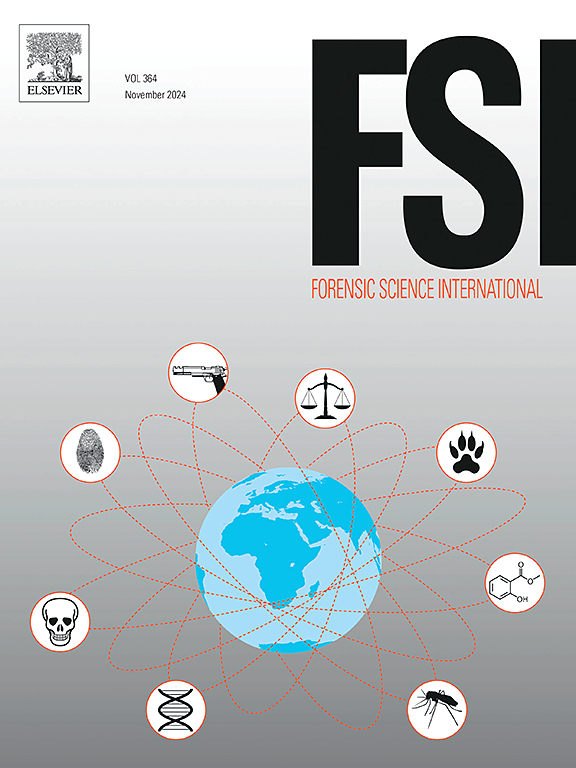“Body farm time machine”: Results from taphonomic study of burial and underwater contexts
IF 2.2
3区 医学
Q1 MEDICINE, LEGAL
引用次数: 0
Abstract
Experimental taphonomy and neotaphonomic monitoring have become two relevant tools in interpreting modifications, and most especially in forensic investigations. Research facilities, where human decomposition experiments are carried out under controlled situations, provide a better understanding of the tapho–forensic history of cadaveric remains under specific environments and in different situations or even climates. There are, however, limitations of time to monitoring, such as space for experimentation and ethics, that do not always allow to carry out these types of investigations. The study presented here investigates the early post mortem modifications of the cadaveric state using animal models (pig autopods) simulating different forensic scenarios in accelerated time, under controlled climatic parameters, in different environmental contexts. This study was carried out under semi-arid conditions programmed in a climatic chamber. The aim of this study is to open a new range of knowledge in experimental taphonomy. As results of this experiment, different types of cadaveric states (such as total skeletonization, skeletonization with dry putrid matter, saponification and mummification) were obtained related to the type of contexts in which animal models were deposited (submerged or buried in wet or dry sediment).
“尸体农场时光机”:埋藏和水下环境的埋藏学研究结果。
实验:触音学和新触音学监测已经成为解释修饰的两种相关工具,尤其是在法医调查中。在受控情况下进行人体分解实验的研究设施,可以更好地了解在特定环境和不同情况甚至气候下的尸体遗骸的tapho-forensic历史。然而,监测的时间有限,例如实验空间和伦理方面的限制,并不总是允许进行这类调查。本研究采用动物模型(猪自残体),在不同的环境背景下,在可控的气候参数下,在加速时间内模拟不同的法医场景,研究了尸体状态的早期死后改变。这项研究是在半干旱条件下进行的,在一个气候室进行编程。本研究的目的是在实验地形学中开辟一个新的知识范围。实验结果表明,不同类型的尸体状态(如完全骨骼化、带有干腐物质的骨骼化、皂化和木乃伊化)与动物模型沉积的环境类型(淹没或埋在湿或干沉积物中)有关。
本文章由计算机程序翻译,如有差异,请以英文原文为准。
求助全文
约1分钟内获得全文
求助全文
来源期刊

Forensic science international
医学-医学:法
CiteScore
5.00
自引率
9.10%
发文量
285
审稿时长
49 days
期刊介绍:
Forensic Science International is the flagship journal in the prestigious Forensic Science International family, publishing the most innovative, cutting-edge, and influential contributions across the forensic sciences. Fields include: forensic pathology and histochemistry, chemistry, biochemistry and toxicology, biology, serology, odontology, psychiatry, anthropology, digital forensics, the physical sciences, firearms, and document examination, as well as investigations of value to public health in its broadest sense, and the important marginal area where science and medicine interact with the law.
The journal publishes:
Case Reports
Commentaries
Letters to the Editor
Original Research Papers (Regular Papers)
Rapid Communications
Review Articles
Technical Notes.
 求助内容:
求助内容: 应助结果提醒方式:
应助结果提醒方式:


